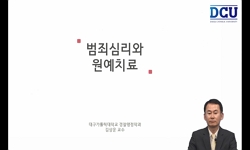This paper intends to examine the relationship between Nature (性) and Artifice(僞) in Xunzi's thesis of human nature by re-examining the relationship between Aristotle's Physis and Nomos. During the Warring States period when Xunzi was active, disc...
http://chineseinput.net/에서 pinyin(병음)방식으로 중국어를 변환할 수 있습니다.
변환된 중국어를 복사하여 사용하시면 됩니다.
- 中文 을 입력하시려면 zhongwen을 입력하시고 space를누르시면됩니다.
- 北京 을 입력하시려면 beijing을 입력하시고 space를 누르시면 됩니다.

퓌시스와 노모스, 자연과 인위의 경계 좁히기 -순자(荀子) 성악설 재고찰- = Narrowing the Boundary Between Physis and Nomos, Nature and Artifice -Rereading Xing'e in Xunzi-
한글로보기https://www.riss.kr/link?id=A108728689
-
저자
김주영 (이화여자대학교)

- 발행기관
- 학술지명
- 권호사항
-
발행연도
2023
-
작성언어
Korean
-
주제어
순자 ; 본성론 ; 성선설 ; 성악설 ; 아리스토텔레스 ; 화성기위 ; 예의 ; 퓌시스 ; Xunzi (荀子) ; Human nature ; Xing'e (性惡) ; Aristotle ; Huaxing qi wei (化性 起僞) ; Ritual ; Physis
-
등재정보
KCI등재
-
자료형태
학술저널
-
수록면
217-248(32쪽)
- DOI식별코드
- 제공처
-
0
상세조회 -
0
다운로드
부가정보
다국어 초록 (Multilingual Abstract)
Xunzi is well known for the Xing'e, but there is an aspect that the human nature is not fixed and unchanging, but is formed by changing. Strictly speaking, Xunzi's nature is the tendency to flow into evil. From this point of view, it should not be overlooked that Xunzi's nature also coexists with the possibility of generating moral standards. As a possibility, it can be pointed out the 'ability of discrimination' given only to humans and natural emotions that are the basis of moral norms.
At the same time, in the West, discussions on human morality developed without sticking to the issue of 'good' or 'evil'. It breaks away from the exclusive classification of human nature as 'good' or 'evil' and approaches it more realistically. Paying attention to this point, when re-reading Xunzi's Xing’e, I would like to clarify that the relationship between Nature (性) and Artifice (僞) in Xunzi is not completely contradictory, and that courtesy corresponding to artifice is an extension of nature. In this way, I think that reinterpreting Xunzi's theory of human nature would be more in line with Xunzi's original intention. After examining the duality of human nature in Xunzi, based on this, I discussed the relationship between Aristotle's Physis and Nomos and the corresponding aspect.
This paper intends to examine the relationship between Nature (性) and Artifice(僞) in Xunzi's thesis of human nature by re-examining the relationship between Aristotle's Physis and Nomos. During the Warring States period when Xunzi was active, discussions focused on whether it was good or evil in terms of 'human nature' in relation to morality. Although this exclusive method of distinction was a mainstream issue at the time, I tried to point out that, in fact, this dichotomy did not reveal Xunzi's thoughts well.
Xunzi is well known for the Xing'e, but there is an aspect that the human nature is not fixed and unchanging, but is formed by changing. Strictly speaking, Xunzi's nature is the tendency to flow into evil. From this point of view, it should not be overlooked that Xunzi's nature also coexists with the possibility of generating moral standards. As a possibility, it can be pointed out the 'ability of discrimination' given only to humans and natural emotions that are the basis of moral norms.
At the same time, in the West, discussions on human morality developed without sticking to the issue of 'good' or 'evil'. It breaks away from the exclusive classification of human nature as 'good' or 'evil' and approaches it more realistically. Paying attention to this point, when re-reading Xunzi's Xing’e, I would like to clarify that the relationship between Nature (性) and Artifice (僞) in Xunzi is not completely contradictory, and that courtesy corresponding to artifice is an extension of nature. In this way, I think that reinterpreting Xunzi's theory of human nature would be more in line with Xunzi's original intention. After examining the duality of human nature in Xunzi, based on this, I discussed the relationship between Aristotle's Physis and Nomos and the corresponding aspect.
국문 초록 (Abstract)
고대 중국과 마찬가지로 고대 그리스에서도 인간의 도덕적 가능성에 대한 철학적 논의가 이루어졌다. 그러나 고대 중국과 달리 고대 그리스 철학에서는 본성을 선이나 악에 귀속시키지 않고 본성과 인위의 관계를 통해 도덕적 이상 사회에 관한 논의가 전개되었다. 특히 아리스토텔레스는 인간의 자연성에 대해 현실적으로 접근하면서도 정치 제도나 법률과 같은 인위의 도움이 없이는 인간의 본성을 실현할 수 없다고 주장하며 인위는 자연을 완성하는 것이라고 보았다. 다시 말해 자연으로서의퓌시스와 인위로서의 노모스의 관계를 통해 도덕적 이상 사회를 논의했던 것이다.
이때 아리스토텔레스의 퓌시스와 노모스의 관계는 순자의 본성론을 이해하는 데 하나의 참조점이 될 수 있다. 순자에게도 유사한 이론적 구도를 확인할 수 있기 때문이다. 순자의 본성은 본래 악으로 흐를 수 있는 경향성뿐만 아니라, 인간이 가진 고유의 능력인 ‘변별 능력’과 ‘자연적 감정’까지도 포함이 되는데, 이러한 능력은 도덕적사회의 기초를 마련하는 토대이다. 또 예의는 이 생득적 능력을 도덕으로 향하도록안내해주는 역할을 한다. 즉, 순자에게서도 자연과 인위는 협력하는 관계인 것이다.
이런 맥락에서 볼 때 아리스토텔레스의 자연(퓌시스)과 인위(노모스)의 관계는 순자에서 본성[性]과 인위[僞]의 관계를 모순 없이 이해하기 위한 하나의 제안이 될 수있다. 이에 이 논문에서는 순자에서 본성의 이중성에 대해 분석한 뒤 이를 바탕으로아리스토텔레스의 퓌시스와 노모스의 관계와 상응하는 측면을 고찰하였다.
이 논문은 순자의 본성[性]과 인위[僞]의 관계를 아리스토텔레스의 퓌시스와 노모스의 관계를 통해 재조명함으로써 순자의 성악설을 재고찰하려는 시도이다. 순자가활동했던 전국(戰國) 시...
이 논문은 순자의 본성[性]과 인위[僞]의 관계를 아리스토텔레스의 퓌시스와 노모스의 관계를 통해 재조명함으로써 순자의 성악설을 재고찰하려는 시도이다. 순자가활동했던 전국(戰國) 시대에 인간의 도덕성에 관한 논의는 ‘본성론’ 의 맥락에서 다루어지는 경우가 많았다. 중국 고대에서 인간의 본성을 선이나 악으로 규정하고자했던 궁극적인 목표는 인간 도덕성의 출발점과 작동 방식을 규명함으로써 이로부터도덕적 이상사회를 실현하고자 했기 때문일 것이다. 그러나 이러한 선과 악의 이분법적 구도로는 순자의 이론적 지향을 충분히 드러내기 어렵다. 순자 본성론의 초점을 ‘악’에 둘 경우 순자 철학 안에서 도덕성의 토대로서 본성과 인위의 긴장 관계를합리적으로 설명하기 어렵다. 본성이 근본적으로 악하다면 선으로서의 인위는 어디에서 기원하는지 일관성 있게 설명되지 않기 때문이다.
고대 중국과 마찬가지로 고대 그리스에서도 인간의 도덕적 가능성에 대한 철학적 논의가 이루어졌다. 그러나 고대 중국과 달리 고대 그리스 철학에서는 본성을 선이나 악에 귀속시키지 않고 본성과 인위의 관계를 통해 도덕적 이상 사회에 관한 논의가 전개되었다. 특히 아리스토텔레스는 인간의 자연성에 대해 현실적으로 접근하면서도 정치 제도나 법률과 같은 인위의 도움이 없이는 인간의 본성을 실현할 수 없다고 주장하며 인위는 자연을 완성하는 것이라고 보았다. 다시 말해 자연으로서의퓌시스와 인위로서의 노모스의 관계를 통해 도덕적 이상 사회를 논의했던 것이다.
이때 아리스토텔레스의 퓌시스와 노모스의 관계는 순자의 본성론을 이해하는 데 하나의 참조점이 될 수 있다. 순자에게도 유사한 이론적 구도를 확인할 수 있기 때문이다. 순자의 본성은 본래 악으로 흐를 수 있는 경향성뿐만 아니라, 인간이 가진 고유의 능력인 ‘변별 능력’과 ‘자연적 감정’까지도 포함이 되는데, 이러한 능력은 도덕적사회의 기초를 마련하는 토대이다. 또 예의는 이 생득적 능력을 도덕으로 향하도록안내해주는 역할을 한다. 즉, 순자에게서도 자연과 인위는 협력하는 관계인 것이다.
이런 맥락에서 볼 때 아리스토텔레스의 자연(퓌시스)과 인위(노모스)의 관계는 순자에서 본성[性]과 인위[僞]의 관계를 모순 없이 이해하기 위한 하나의 제안이 될 수있다. 이에 이 논문에서는 순자에서 본성의 이중성에 대해 분석한 뒤 이를 바탕으로아리스토텔레스의 퓌시스와 노모스의 관계와 상응하는 측면을 고찰하였다.
동일학술지(권/호) 다른 논문
-
- 충남대학교 유학연구소
- 박길수
- 2023
- KCI등재
-
공감을 넘어서 공명으로 - 왕양명의 생명철학을 중심으로-
- 충남대학교 유학연구소
- 정갑임
- 2023
- KCI등재
-
리(理)를 철학화한 순자(荀子) - 자연과 인간의 접점에서 사유하기 -
- 충남대학교 유학연구소
- 조성환
- 2023
- KCI등재
-
방법으로서의 주자학: 지금 여기서 ‘주자학’을 공부한다는 것의 의미
- 충남대학교 유학연구소
- 이찬
- 2023
- KCI등재




 KCI
KCI KISS
KISS






